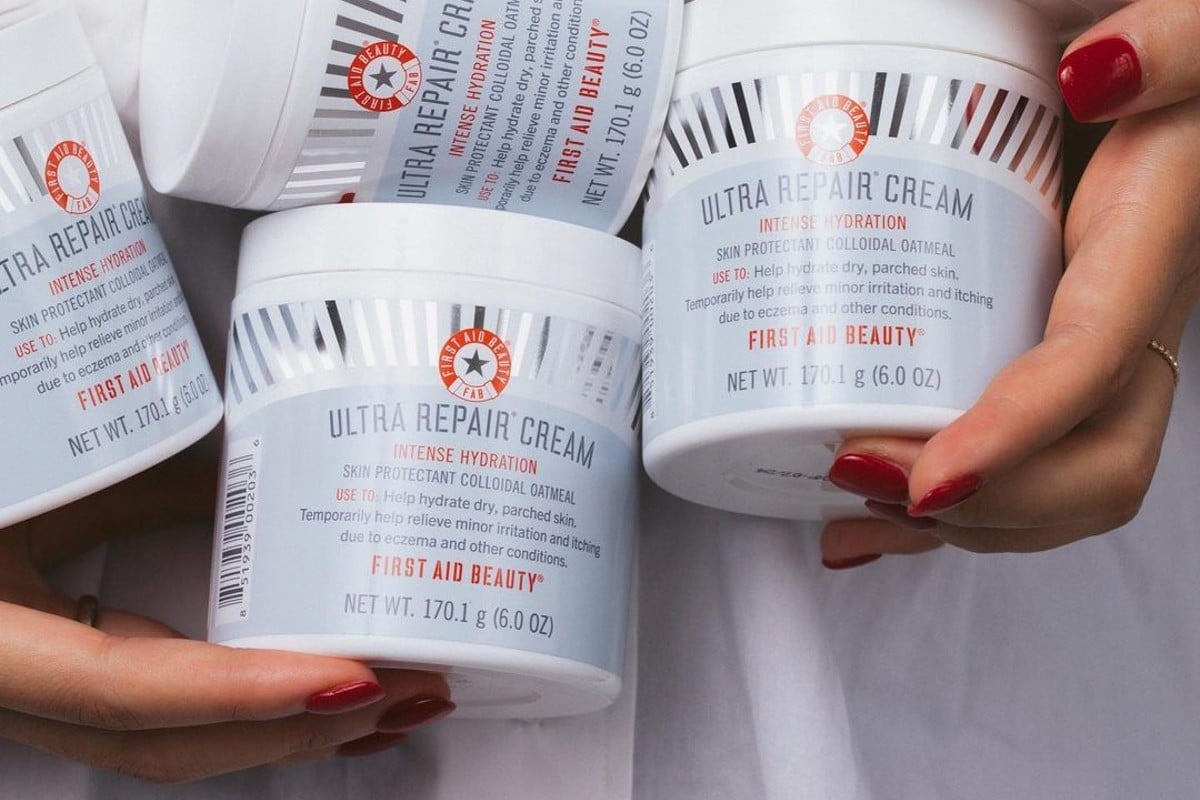Vitamin C is rarely missing from skincare enthusiasts’ vanity countertops, as it can do a bunch of things at once, from neutralizing free radicals that lead to premature aging, to evening tone, to boosting collagen and improving overall skin health. But as good as it is, vitamin C can be drying or irritating for some, particularly when in its active form, L-ascorbic acid, and especially to those whose skin is easily reactive. This is where vitamin C alternatives come to help: they have similar benefits while acting gentler on the skin.
So, if you fall into the vitamin C-gives-me-redness category, this post is for you. Here you will find the best alternatives to vitamin C that work gently to brighten, firm, and protect the skin.
Niacinamide
Niacinamide (vitamin B3) is the mild alternative to vitamin C since it carries most of its perks and is not as acidic, meaning it’s easily tolerated by sensitive skin folks. Like vitamin C, niacinamide is an antioxidant that keeps the skin guarded against free radical damage, offsetting premature wrinkles and dark spots.[1] Both are also potent collagen-boosters that increase skin firmness and elasticity and deliver brightening effects; niacinamide does it by inhibiting the transfer of pigment to the skin’s surface, while vitamin C decreases melanin formation by inhibiting the pigment-producing enzyme (tyrosinase).[2][3] We recommend these niacinamide serums as an alternative to your vitamin C serum.
Astaxanthin
The so-called “King of Carotenoids” is a great vitamin C alternative that starts from its antioxidant properties to inducing collagen and fixing an uneven skin tone. Astaxanthin is a red pigment (carotenoid) with antioxidant activity that scavenges free radicals from UV, pollution, and smoke, warding off oxidative stress. Its collagen-boosting and -protecting abilities make it a closer alternative to vitamin C, being touted for firming, enhancing elasticity, and reducing the look of wrinkles.[4][5] As it has increased anti-inflammatory benefits, astaxanthin can be applied by those with redness, reactive or breakout-prone skins.
Alpha-arbutin
If you’re looking for that vitamin C alternative that delicately brightens and speeds up wound healing, keep alpha-arbutin serums on your radar. Even if it fades dark spots by inhibiting the tyrosinase enzyme — same as vitamin C — alpha-arbutin acts gentler.[6] Alpha-arbutin is effective in encouraging wound healing by lowering free radical formation and regulating specific growth factors in the skin, which are essential for the skin’s autophagic (cellular degradation) process.[7]
Kojic acid
Three main benefits make kojic acid a suitable vitamin C alternative that you can always turn to: antioxidant, brightening, and anti-inflammatory. Kojic acid is often used as a skin whitening agent due to its tyrosinase inhibitory activity, just that it works more delicately.[8]
Glucosamine
Glucosamine is another vitamin C alternative that performs amazingly at increasing skin elasticity and brightening while being super gentle to the skin, even sensitive ones. Glucosamine enhances the production of hyaluronic acid and collagen in the skin and prevents protein degradation, translating into less visible wrinkles and a smoother and firmer complexion. Moreover, glucosamine is a tyrosinase inhibitor, meaning it lightens dark patches and evens tone.[9]
Licorice extract
Licorice extract is the new vitamin C, they say. Besides being a potent antioxidant thanks to its rich content of flavonoids, licorice extract suppresses melanin production and prevents UVB-induced pigmentation due to glabridin content, and has anti-inflammatory effects.[10] The UVB-protecting role of licorice extract leads to significantly increased skin elasticity and firmness.
Tranexamic acid
If you haven’t given tranexamic acid a try already, you should. It’s a synthetic derivative of lysine amino acid that, just like vitamin C, brightens and reduces dark spots by suppressing pigment formation in the skin. And there’s plenty of research to prove it. During a 2014 study, a topical solution with 3% tranexamic acid was as effective as hydroquinone, which is one of the most potent brightening agents.[11] Tranexamic acid is also a great anti-inflammatory and hinders the degradation of proteins such as collagen. Plus, it’s highly tolerated and gentle enough for sensitive skin — though it would be best to perform a patch test before.
Read more: 11 Best Tranexamic Acid Serums to Banish Dark Spots
Resveratrol
I’m sure you’re familiar with the benefits of resveratrol for skin. It’s one of the most researched antioxidants and tyrosinase-inhibitors, so in case you can’t tolerate vitamin C, it makes total sense to use resveratrol. As a matter of fact, compared to hydroquinone, vitamin C, and arbutin, resveratrol is much superior in reducing pigment production.[12] Also, it can significantly diminish discoloration and improve skin tone when used in concentrations above 1%, which is easily tolerated by most skin types.
Other forms of vitamin C
Vitamin C comes in many forms in skincare products, some of which are gentler and more stable. Sodium ascorbyl phosphate, magnesium ascorbyl phosphate, sodium ascorbate, and ascorbyl palmitate are all perfect alternatives for those who can’t tolerate pure vitamin C, aka L-ascorbic acid, since they are less irritating. You can also try a formula with time-release vitamin C, which is basically a system that carries and slowly release vitamin C in the skin to reduce the chances of irritation.
- Paul J. Matts, John E. Oblong, and Donald L. Bissett, A Review of the range of effects of niacinamide in human skin, January 2002
- Telang PS. Vitamin C in dermatology. Indian Dermatol Online J. 2013;4(2):143-146. doi:10.4103/2229-5178.110593
- Hakozaki T, Minwalla L, Zhuang J, Chhoa M, Matsubara A, Miyamoto K, Greatens A, Hillebrand GG, Bissett DL, Boissy RE. The effect of niacinamide on reducing cutaneous pigmentation and suppression of melanosome transfer. Br J Dermatol. 2002 Jul;147(1):20-31. doi: 10.1046/j.1365-2133.2002.04834.x. PMID: 12100180.
- Xiangyu Zhou, Qingming Cao, Caroline Orfila,Jian Zhao andLin Zhang, Systematic Review and Meta-Analysis on the Effects of Astaxanthin on Human Skin Ageing, 24 August 2021
- Chou HY, Lee C, Pan JL, Wen ZH, Huang SH, Lan CW, Liu WT, Hour TC, Hseu YC, Hwang BH, Cheng KC, Wang HM. Enriched Astaxanthin Extract from Haematococcus pluvialis Augments Growth Factor Secretions to Increase Cell Proliferation and Induces MMP1 Degradation to Enhance Collagen Production in Human Dermal Fibroblasts. Int J Mol Sci. 2016 Jun 16;17(6):955. doi: 10.3390/ijms17060955.
- Nikhil Chandorkar, Srushti Tambe, Purnima Amin, Institute of Chemical Technology, Department of Oils, Oleochemicals, and Surfactants Technology, Mumbai 400019, India, Alpha Arbutin as a Skin Lightening Agent: A Review, April 2021, DOI:10.31838/ijpr/2021.13.02.446
- Polouliakh N, Ludwig V, Meguro A, Kawagoe T, Heeb O, Mizuki N. Alpha-Arbutin Promotes Wound Healing by Lowering ROS and Upregulating Insulin/IGF-1 Pathway in Human Dermal Fibroblast [published correction appears in Front Physiol. 2021 Mar 12;12:659813]. Front Physiol. 2020;11:586843. Published 2020 Nov 4. doi:10.3389/fphys.2020.586843
- Majid Saeedi, Masoumeh Eslamifar, Khadijeh Khezri, Kojic acid applications in cosmetic and pharmaceutical preparations, Biomedicine & Pharmacotherapy, Volume 110, 2019
- Bissett DL. Glucosamine: an ingredient with skin and other benefits. J Cosmet Dermatol. 2006 Dec;5(4):309-15. doi: 10.1111/j.1473-2165.2006.00277.x. PMID: 17716251.
- Liyanage A, Liyanage G, Sirimanna G, Schürer N. Comparative Study on Depigmenting Agents in Skin of Color. J Clin Aesthet Dermatol. 2022;15(2):12-17.
- Ebrahimi B, Naeini FF. Topical tranexamic acid as a promising treatment for melasma. J Res Med Sci. 2014;19(8):753-757.
- Na JI, Shin JW, Choi HR, Kwon SH, Park KC. Resveratrol as a Multifunctional Topical Hypopigmenting Agent. Int J Mol Sci. 2019;20(4):956. Published 2019 Feb 22. doi:10.3390/ijms20040956





